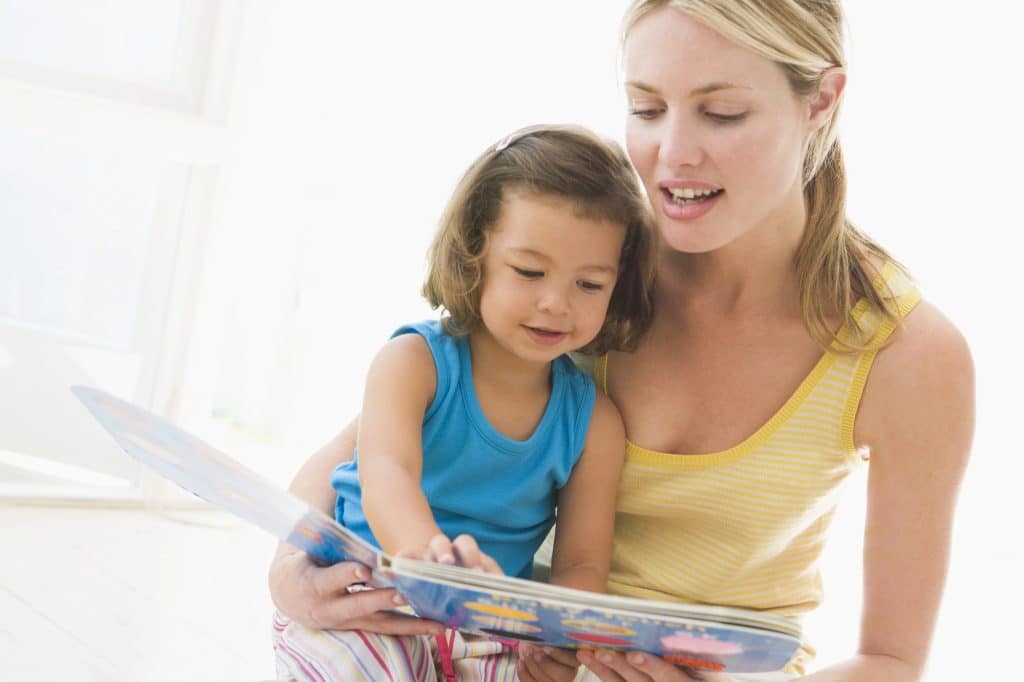Table of Contents
Disciplining a 2-year-old can be one of the most challenging and frustrating tasks for parents. At this age, children are exploring their independence, testing boundaries, and learning to navigate the world around them. While it’s essential to set clear rules and expectations, traditional methods of discipline, such as spanking or harsh punishments, are not only ineffective but can also have negative long-term effects on a child’s emotional well-being. In this comprehensive guide, we’ll explore the most effective, research-backed strategies for disciplining your 2-year-old in a positive, gentle, and developmentally appropriate way.
Understanding Your 2-Year-Old’s Development
Before diving into specific discipline strategies, it’s crucial to understand the developmental stage your 2-year-old is going through. At this age, children are:
1. Exploring their independence and autonomy
2. Learning to communicate their needs and wants
3. Developing a sense of self and their place in the world
4. Testing boundaries and limits
5. Experiencing a wide range of emotions that they may not yet know how to regulate
Keeping these developmental milestones in mind can help you approach discipline with empathy, patience, and realistic expectations.
Setting Clear Rules and Boundaries
The foundation of effective discipline is setting clear, age-appropriate rules and boundaries. These rules should address behaviors that are:
1. Aggressive, such as hitting or biting
2. Dangerous, like running into the street or touching a hot stove
3. Inappropriate, such as throwing food or screaming in public
When establishing rules, keep them simple, specific, and easy for your child to understand. Use positive language whenever possible, focusing on what you want your child to do rather than what you don’t want them to do. For example, instead of saying, “Don’t run,” try, “Please walk inside the house.”
It’s also important to be consistent in enforcing these rules and to follow through with appropriate consequences when they are broken. This helps your child learn that their actions have predictable outcomes and that they are responsible for their choices.
Using Positive Reinforcement
Positive reinforcement is a powerful tool for encouraging good behavior in 2-year-olds. When your child follows the rules or demonstrates desired behaviors, be sure to acknowledge and praise their efforts. This can be as simple as saying, “Great job putting your toys away!” or offering a high-five.
You can also use rewards to reinforce positive behavior, such as offering stickers, small treats, or extra playtime for completing tasks or following rules. Just be sure to use rewards sparingly and to focus on intrinsic motivation (the satisfaction of doing the right thing) rather than external rewards.
Redirecting Unwanted Behavior
When your 2-year-old engages in unwanted behavior, redirection can be an effective strategy. This involves guiding your child towards a more appropriate activity or behavior rather than simply saying “no” or punishing them.
For example, if your child is throwing toys, you might say, “Throwing toys can hurt someone. Let’s see how far we can roll the ball instead!” By offering an alternative activity that meets your child’s needs (in this case, the desire to explore cause and effect), you can help them learn appropriate ways to express themselves and interact with their environment.
Teaching Emotional Regulation
Two-year-olds are just beginning to learn how to identify and manage their emotions. As a parent, you play a crucial role in helping them develop emotional regulation skills. When your child is experiencing a strong emotion, such as anger or frustration, try the following:
1. Acknowledge their feelings: “I can see that you’re feeling angry right now.”
2. Help them label their emotions: “It’s okay to feel mad sometimes.”
3. Teach calming strategies: “Let’s take a deep breath together and count to three.”
4. Model appropriate emotional expression: “I’m feeling frustrated too, but I’m going to take a moment to calm down before I respond.”
By validating your child’s emotions and teaching them healthy coping strategies, you help them build a strong foundation for emotional resilience and self-regulation.
Using Natural and Logical Consequences
Natural and logical consequences are effective discipline tools that help children learn from their actions in a meaningful way. Natural consequences occur as a direct result of a child’s behavior, without any intervention from the parent. For example, if a child refuses to wear a coat on a cold day, the natural consequence is that they will feel cold.
Logical consequences, on the other hand, are related to the child’s behavior but are imposed by the parent. For instance, if a child repeatedly throws their food on the floor, a logical consequence might be that they have to help clean up the mess.
When using consequences as a discipline strategy, be sure to:
1. Keep them age-appropriate and proportionate to the behavior
2. Explain the connection between the behavior and the consequence
3. Follow through consistently
4. Avoid using consequences as a threat or punishment
Implementing Time-Outs Effectively
Time-outs can be a controversial topic in parenting circles, but when used appropriately, they can be an effective tool for helping children calm down and regain self-control. The key is to use time-outs as a chance for your child to take a break and reset, rather than as a punishment.
To implement time-outs effectively:
1. Choose a quiet, safe space where your child can sit or play calmly
2. Keep time-outs brief (one minute per year of age is a good rule of thumb)
3. Explain why the time-out is happening and what behavior you expect when it’s over
4. Avoid engaging with your child during the time-out
5. Praise your child for calming down and returning to appropriate behavior after the time-out
Promoting Problem-Solving Skills
As your 2-year-old grows, you can begin to involve them in problem-solving and decision-making processes. This helps them develop critical thinking skills, empathy, and a sense of autonomy. When a conflict or challenge arises, try the following:
1. Help your child identify the problem: “It looks like you and your sister both want to play with the same toy.”
2. Encourage them to generate solutions: “What do you think we could do to solve this problem?”
3. Discuss the pros and cons of each solution: “If we take turns, you’ll both get to play with the toy, but you’ll have to wait a little bit. If we find another toy to play with, you can play right now, but it won’t be the one you really wanted.”
4. Let your child choose a solution and try it out: “Which idea do you think would work best?”
5. Reflect on the outcome and adjust as needed: “How did that solution work? Do we need to try something else?”
By involving your child in the problem-solving process, you help them develop valuable life skills and a sense of ownership over their actions.
Maintaining a Strong Parent-Child Relationship
At the heart of positive discipline is a strong, nurturing relationship between parent and child. When your child feels loved, respected, and supported, they are more likely to cooperate and learn from your guidance. To foster a strong relationship with your 2-year-old:
1. Spend quality time together engaged in activities you both enjoy
2. Listen actively and validate their feelings and experiences
3. Show affection through hugs, cuddles, and words of love
4. Celebrate their successes and offer support during challenges
5. Model the behavior and values you want to see in your child
Remember, discipline is not about control or punishment, but about teaching and guiding your child towards making positive choices and developing essential life skills.
Adapting Discipline to Your Child’s Unique Needs
Every child is different, and what works for one may not work for another. As you implement these discipline strategies, be sure to observe your child’s responses and adjust your approach as needed. Some factors to consider include:
1. Your child’s temperament and personality
2. Their developmental stage and abilities
3. Any special needs or challenges they may have
4. Your family’s cultural background and values
By tailoring your discipline approach to your child’s unique needs and your family’s context, you can create a more effective and supportive environment for your 2-year-old’s growth and development.
Seeking Support and Resources
Disciplining a 2-year-old can be a daunting task, and it’s okay to seek support and guidance along the way. Consider the following resources:
1. Parenting books and websites that focus on positive discipline strategies
2. Family therapists or parenting coaches who specialize in early childhood development
3. Parent support groups or online communities where you can connect with other parents and share experiences and advice
4. Your child’s pediatrician, who can offer guidance on developmental milestones and behavior management techniques
Remember, you are not alone in this journey, and there is no shame in reaching out for help when you need it.
The Bottom Line
Disciplining a 2-year-old is a challenging but essential task for parents. By setting clear rules and boundaries, using positive reinforcement, redirecting unwanted behavior, teaching emotional regulation, implementing natural and logical consequences, using time-outs effectively, promoting problem-solving skills, maintaining a strong parent-child relationship, adapting to your child’s unique needs, and seeking support when needed, you can create a positive, nurturing environment that promotes your child’s healthy development and well-being.
Remember, discipline is not a one-size-fits-all approach, and what works for one family may not work for another. Trust your instincts, be patient with yourself and your child, and celebrate the small successes along the way. With love, consistency, and a commitment to positive parenting, you can help your 2-year-old navigate this challenging but exciting stage of life and lay the foundation for a lifetime of healthy growth and development.

